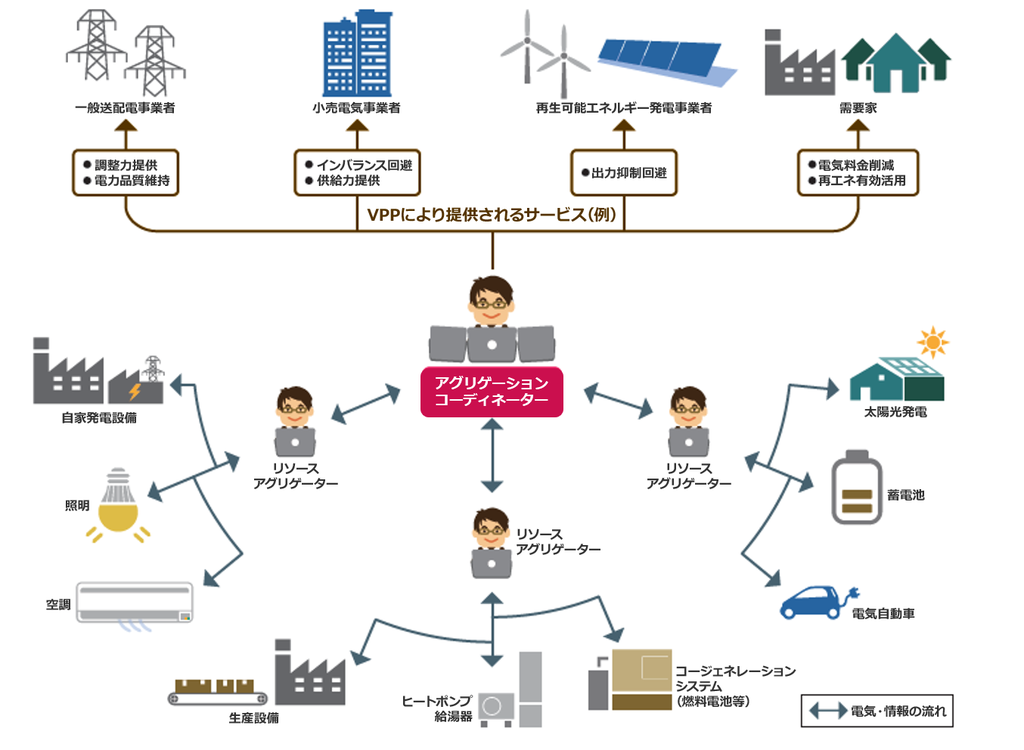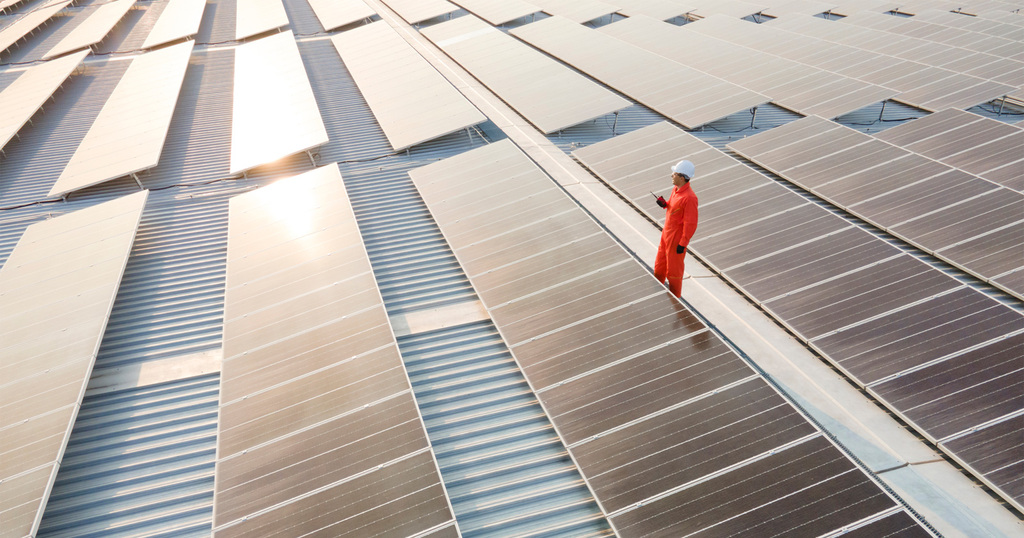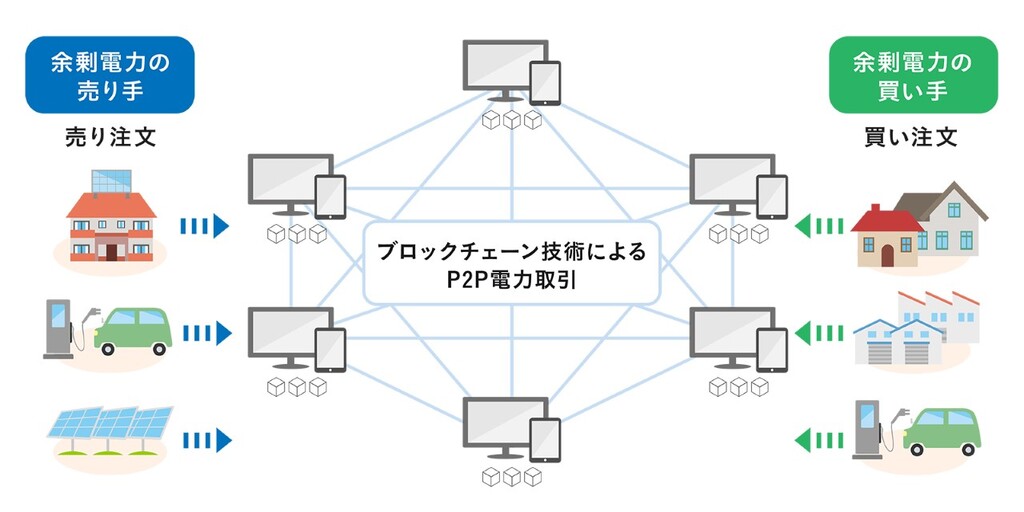Note: This website was automatically translated, so some terms or nuances may not be completely accurate.
Virtual Power Plants (VPPs) bundle distributed energy. Will DX accelerate this "business of bundling small sources"?
With a focus on addressing power shortages and achieving carbon neutrality, attention is turning to the utilization of renewable energy. To ensure stable supply and utilize surplus power, the "Virtual Power Plant (VPP)" is gaining prominence. This system bundles small-scale energy resources and operates them like a large power plant. What are the strengths of this VPP mechanism that "bundles and utilizes small sources"?This article explains the challenges VPPs solve and their future potential.
VPPs Solve Challenges in Renewable Energy
In March 2022, an earthquake off the coast of Fukushima Prefecture caused a power shortage in the Tokyo metropolitan area. While the situation was averted through calls for power conservation, Japan's electricity supply situation continues to worsen. For instance, in June of the same year, an unexpected rise in temperatures led to the issuance of a "Power Supply and Demand Strain Advisory."
The power supply-demand balance must maintain "simultaneous quantity." If the amount of electricity generated (supply) and consumed (demand) does not constantly match, it can cause frequency fluctuations and power quality degradation, potentially leading to blackouts. However, over-reliance on existing large-scale power generation systems makes maintaining this balance difficult, raising concerns about severe problems arising from disasters.Furthermore, while Japan has been promoting the adoption of renewable energy sources like solar power in recent years, aiming for carbon neutrality (achieving net-zero greenhouse gas emissions) by 2050, these sources are highly dependent on environmental factors like weather, leading to unstable power generation.
The solution to these energy challenges lies in the "Virtual Power Plant (VPP)".A VPP is a system that aggregates small-scale energy resources—such as solar and wind power generation, storage batteries, and electric vehicles—owned by factories and households using IoT technology. Specialized operators called aggregators remotely and integrally control these resources to balance electricity supply and demand. Even if individual energy quantities are small, "bundling the small" enables them to function like a large power plant.

Source: Agency for Natural Resources and Energy website
In Europe and the United States, VPP commercialization has been advancing since around the 2010s. While operational methods and business models vary by operator, all leverage flexible mechanisms and supply capacity to develop their businesses.
Benefits of VPPs
What are the key benefits of VPPs? First, they enable efficient utilization of small-scale generation facilities, eliminating the need for large-scale capital investment typical of conventional power plants and reducing infrastructure costs. Second, they mitigate risks like power outages during disasters. A power supply system reliant solely on large-scale facilities risks major disruptions if those facilities shut down during a disaster. By decentralizing generation functions through VPPs, stable supply can be maintained.
Furthermore, VPPs can centrally control multiple resources to balance electricity supply and demand. This allows bundling and controlling small-scale, unstable energy resources like solar and wind power for effective utilization. Consequently, this will also contribute to the spread and expansion of renewable energy.
Blockchain Technology Supporting Complex Power Systems

Given these numerous benefits, why has VPP started gaining attention in Japan?
Historically, Japan's power system featured a simple structure where consumers purchased electricity from regional power companies. However, this centralized system inherently carries vulnerabilities. Furthermore, recent years have seen progress in electricity liberalization, allowing consumers to proactively choose their electricity suppliers and sell surplus power generated from sources like solar. VPPs are likely gaining prominence in response to these trends.
Additionally, the expiration of the feed-in tariff (FIT) purchase period, which began in November 2019, has had an impact.Under the FIT system, utilities were obligated to purchase surplus electricity generated by households and businesses via solar power at a fixed price. After the period ended, options were limited to selling electricity to utilities through free contracts or transitioning to self-consumption by installing storage batteries. However, in recent years, "P2P electricity trading" – a system directly connecting electricity sellers and buyers – has been gaining attention.
P2P Power Trading: Connecting Electricity Sellers and Buyers
Supporting P2P power trading is blockchain technology, used in cryptocurrency transactions. Blockchain is a technology that divides encrypted information into units called "blocks" and manages them in a distributed manner. It is said to maintain transparency while ensuring high security and preventing fraudulent tampering. Its ability to enable near-real-time small-value payments using cryptocurrency and direct peer-to-peer settlements without intermediaries makes it well-suited for P2P power trading.

Leading the way in blockchain-based P2P power trading overseas is an Australian startup. The company has built a P2P power trading platform that not only facilitates the sale of surplus electricity but also contributes to frequency and voltage control, as well as load balancing. In addition to securing government funding in 2017, it has partnered with retail electricity suppliers and battery storage manufacturers in Japan, the US, France, Germany, Thailand, and other countries to commercialize its Virtual Power Plant (VPP).
In Japan, initiatives utilizing blockchain technology from this Australian startup are also progressing. For example, a major Japanese power company began demonstration research on P2P electricity trading in 2018. This involved simulating the determination of trading prices and direct transactions for surplus electricity generated by solar power.
Furthermore, in 2019, major power companies and others initiated a VPP demonstration utilizing electric vehicles (EVs). This initiative involves monitor participants who own EVs transporting surplus electricity generated by their home solar panels to stores in their EVs. They then supply this electricity to the stores via charging/discharging stations installed in the parking lot, and this electricity is utilized by the VPP. Monitor participants who supply electricity are awarded points redeemable for shopping.
Simultaneously, a demonstration experiment was conducted to manage and transfer "environmental value" alongside the electricity. Environmental value refers to the concept of recognizing the added value of renewable energy – specifically, the fact that it "does not emit CO2" – as distinct from the value of the electricity itself.In Japan, initiatives to trade this environmental value are beginning. Therefore, this demonstration experiment aimed to establish a system for accurately measuring the amount of renewable energy—i.e., "electricity possessing environmental value." Specifically, solar-generated electricity was used to charge EVs, with blockchain technology managing the charging volume. Even as the charged EVs consumed power during travel or underwent charging/discharging at other locations, the blockchain recorded this history, ensuring the value was correctly transferred.
This blockchain-based VPP not only provides consumers with stable power supply but also creates opportunities to generate revenue from surplus electricity obtained through self-generation. By adjusting and optimizing the energy resource of electricity, various benefits can be realized.
The Future of "Bundling Small Players" Enabled by DX

VPPs are expected to go beyond solving energy challenges and become a new business model with significant future potential.
Mechanisms like VPPs, which aim to procure and use electricity more freely and efficiently rather than relying on limited resources, are expanding. For example, Japan just launched its "Supply-Demand Adjustment Market" in April 2021. This market trades electricity "adjustment capacity."As mentioned earlier, ensuring stable electricity supply requires constantly balancing demand and supply. The electricity used to adjust this supply-demand balance is called "balancing power." Previously, power utilities procured balancing power through public tenders in each area. However, with the launch of the "Supply-Demand Balancing Market," transmission and distribution operators can now procure electricity across areas and trade in a unified national market.
Furthermore, the adoption of new power suppliers, home-based self-generation, and selling electricity back to the grid is gaining traction, promising future market growth. Infrastructure development to aggregate decentralized energy resources and the spread of platforms, including blockchain, are also expected to advance significantly.
Approaches like VPPs, which leverage IoT and blockchain to aggregate and consolidate distributed resources—essentially "bundling small resources"—appear to point toward one direction for DX. For example, crowdfunding raises substantial funds by gathering small resources from many locations.VPPs can be seen as applying this concept to electricity, achieving resource aggregation and optimization. This problem-solving scheme may hold hints applicable to the development of other businesses as well.
VPPs are gaining attention as a solution to energy challenges and a means to invigorate the market. At its core lies the "bundling business" model—pooling small forces to create a larger, more efficient, and stable power supply. Those interested in the energy sector, seeking business opportunities, or looking for new scheme references across various industries would do well to monitor these developments.
The information published at this time is as follows.
Was this article helpful?